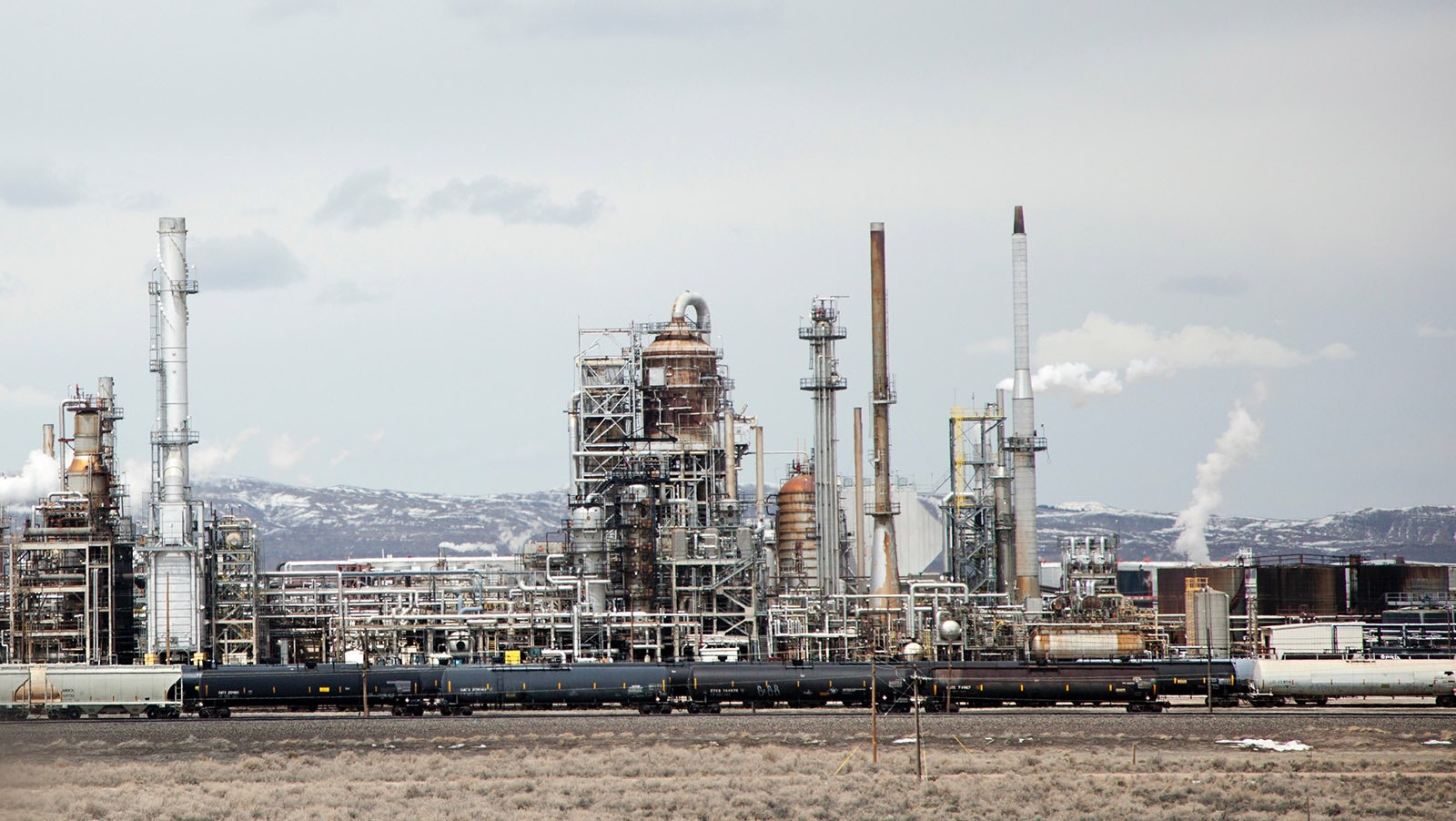Interesting information on two of our Wyoming state refineries being converted to biodiesel, like here in Cheyenne, all to supply California. Though, that makes our refinery in Cheyenne safer as before it made high octane gas which required hydrogen fluoride which can be fatal if released and inhaled. There is a lot of people that live close to the refinery and we’re just a few miles away so that’s a positive, and I regularly bicycle right by it on our Greenway bike trail. Also interesting that a Shark Tank investor is involved in the $14 Billion project. I suppose it will go to the state that makes the most accommodations and has the most cost effective infrastructure.
Kevin Killough

Wyoming may be one of three states under consideration for the location of a new $14 billion refinery.
Canadian businessman and “Shark Tank” star Kevin O’Leary announced on Fox Business’s “The Money Show” last month that he plans to build a $14 billion refinery. He later appeared again on Fox Business and said that he was in talks with three states that have the pipeline infrastructure to support the project.
O’Leary said that, despite all claims to the contrary, the world isn’t going to eliminate the use of fossil fuels for another 50 years.
Limited Capacity
Randall Luthi, Gov. Mark Gordon’s energy czar, said at a Joint Minerals, Business and Economic Development Committee meeting Friday in Kemmerer that he heard Wyoming is a possible location for the project. He later told Cowboy State Daily that he only wished to convey that he hopes Wyoming would be on that list.
Luthi’s comments came during a presentation on Wyoming’s refinery capacity. It’s a nationwide issue, with refineries in the United States operating at 95% capacity, which leaves little room for maintenance or unplanned downtime.
“We could double our crude production in the state of Wyoming, but we don’t have refining capacity, nor does the nation,” said Brenda Hensen, director of the Wyoming Department of Revenue.
Building a refinery is no easy task, and no major refineries have been built in the U.S. since the 1970s. Between the enormous upfront capital investment and the lengthy permitting process, few companies have taken an interest in such an investment.
Long Drives
Hensen was chair of a working group the governor put together last year to explore options the state could pursue to bring down gasoline prices, which in the summer 2022 went over $4.80 in some parts of Wyoming.
There are now six refineries in Wyoming. One produces only renewable diesel for California. A second is also dedicated to producing renewable diesel for California, though it also produces some jet fuel, diesel and gasoline for the Rocky Mountain region.
Hensen said the limited capacity in Wyoming is especially a strain on the state’s gas distributors during July, August and September, when supplies are especially low.
Marketers were among those who spoke to the working group, Hensen said, and they talked of the difficulties they have finding places to fill up their distribution trucks.
“Their truck drivers were driving all night to get in line to purchase that fuel, and in August sometimes they’d get to the front of the line, and it’d be gone,” Hensen said.
The more distance distributors are forced to drive to load up with fuel, the higher the costs to the businesses that sell it.
Sen. Ed Cooper, R-Ten Sleep, who also served on the governor’s working group, said a distributor in Powell told the group that his drivers went to Glendive, Montana, because a refinery in Billings, Montana, pumped its product out by pipeline.
“He would drive right past the refinery to Glendive to fill his truck and then drive back past the refinery to get back to Powell. It’s just frustrating for those people,” Cooper said.
Not In California’s Backyard
The refineries producing biodiesel were previously producing petroleum products before they were converted to satisfy California’s demand for renewable fuel. Both refineries are owned by HF Sinclair.
Rep. Scott Heiner, R-Green River, asked why HF Sinclair found it advantageous to produce the biodiesel here and ship it to California, where it would incur higher shipping costs than if it were produced closer to where it was consumed.
“Why don’t they do it in their own backyard rather than Wyoming?” Heiner said.
Cooper said that, in the same way California is consuming wind energy produced in Wyoming, they will pay premiums to have their refining capacity in Wyoming.
“They don’t want it in their backyard,” Cooper said.
EPA Standards
Pete Obermueller, president of the Petroleum Association of Wyoming, said the conversion to biodiesel was entirely related to the EPA’s Renewable Fuel Standard.
The regulation, he said, requires refineries to blend biodiesel or corn ethanol at increasingly higher rates every year. To meet the standards, the refineries have to buy a certain amount of renewable identification numbers.
“Think of it like a sage grouse mitigation bank. You buy these RINs in order to meet your renewable fuel standard,” Obermueller explained.
As these standards get more and more stringent, he said, it no longer makes economic sense to refine petroleum products.
Cooper said Wyoming gets some jobs out of the deal, but “we’re basically a passthrough place for it.”
He said it’s possible one of the other refineries could convert to biodiesel in the future, further reducing Wyoming’s petroleum refining capacity.